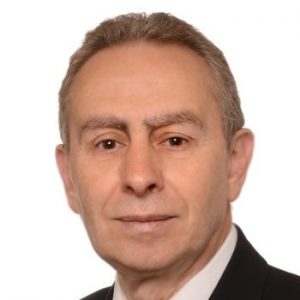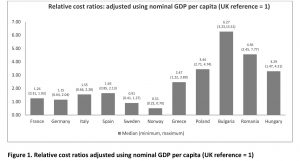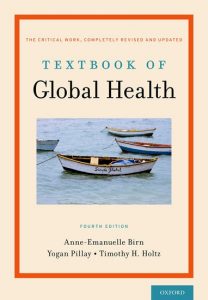La République démocratique du Congo continue à être confrontée à une crise humanitaire de très grande ampleur, et cela depuis plus de deux décennies, bien que la grande majorité du territoire nationale demeure stable, mais les provinces du Sud-Kivu, du Nord-Kivu, du Tanganyika et du Kasaï central sont les théâtres des tueries, massacres et violations répétitives des droits de l’homme à l’heure actuelle

By Alphonse Kitoga
Secretary General, Grands-Lacs en Action pour la Paix et le Développement Durable -The Great-Lakes in Action for Peace and the sustainable Development
GLAPD_ Africa, asbl
SOS A LA SITUATION HUMANITAIRE DANS LES PROVINCES DU TANGANYIKA, DU KASAЇ-KANANGA, DU NORD-KIVU et DU SUD-KIVU EN REPUBLIQUE DEMOCRATIQUE DU CONGO/DRC
I. INTRODUCTION
Avec environ 65 millions d’habitant, la R.D.Congo a une superficie de 2 345 410 KM2 (4 fois la France et 80 fois la Belgique) et avec 26 provinces et, Kinshasa sa capitale compte environ 10 millions d’habitants (plus que les populations du Congo-Brazzaville, du Gabon et de la République Centrafricaine réunies).
En effet, dans plusieurs provinces de la RDC les milices ne font que se multiplier (on arme et on manipule les jeunes/les adolescents(es) qui ne peuvent plus étudier car leurs parents se sont appauvrit et n’ont pas de travail. Avec l’arrivée de près de 15.000 réfugiés Burundais dans la plaine de la Ruzizi au Sud-Kivu en raison des tensions ethniques qui se vit dans leur pays le Burundi qui sème panique et désolation dans le chef de la population de cette région martyrisée. Signalons également que les provinces du Nord et du Sud-Kivu compte plus de 1.000000 des déplacés et plus de 200 000 réfugiés Rwandais qui surplombe toutes les deux provinces!
II. RESUME EXECUTIF ET NARRATIF
La République démocratique du Congo continue à être confrontée à une crise humanitaire de très grande ampleur, et cela depuis plus de deux décennies, bien que la grande majorité du territoire nationale demeure stable, mais les provinces du Sud-Kivu, du Nord-Kivu, du Tanganyika et du Kasaï central sont les théâtres des tueries, massacres et violations répétitives des droits de l’homme à l’heure actuelle.
Cependant que, cette crise est principalement la conséquence de conflits armés, des conflits intercommunautaire, coutumiers et de violences armées qui perdurent dans l’Est, le nord-Est et dans le centre du pays. Ces conflits sont causés en particulier par des luttes pour le contrôle des ressources naturelles et l’accès à la terre, par des tensions ethniques et par l’activisme de groupes armés congolais et étrangers (FDRL, LRA, groupes Maï-Maï, AFD/NALU, le M23, les Pygmées/Batwa contre les Bantous-Baluba dans le Tanganyika et les miliciens du Chef coutumier Kamwina N’sapu dans le Kasaï central/Kananga avec les forces de l’ordre/l’armée régulière), dans un contexte caractérisé par une pauvreté exacerbée et une trop faible présence des institutions de l’Etat. Les exactions graves commises par les parties belligérantes sur les populations civiles, tels que viols, meurtres, recrutements forcés des enfants/adolescents dans les forces et groupes armés et pillages, demeurent la cause principale des déplacements de population et de la crise humanitaire liée à ces déplacements. Des centaines de milliers de civils ont fui ces exactions en 2011 à ces jours!
L’année 2016-2017 a également été marquée par des violences intercommunautaires entre les Pygmées/Batwa contre les Bantous-Baluba qui ont éclaté en la province de Tanganyika en octobre 2016, provoquant la fuite de près de 470.000 personnes déplacées et dont le site de Kalunga à Kalemie compte à lui seul 17.500 déplacés et nombreux dans eux sont des femmes, des enfants et des adolescents. A cela s’ajoutent près de 650 000 déplacés internes prenant fuite du conflit intercommunautaire et coutumier orchestré par les miliciens du Chef coutumier Kamwina N’sapu dans le Kasaï central/Kananga avec les forces de l’ordre/l’armée régulière.
Les besoins humanitaires demeurent également très importants dans les autres provinces où l’on a relevé des taux élevés de malnutrition aigüe et sévère, d’insécurité alimentaire, et de mortalité maternelle, infantile et néo-natale. Les causes en sont avant tout le faible niveau de développement, l’enclavement et la précarité des infrastructures, les épidémies et les catastrophes naturelles pour ne citer que ceux-là.
Bien que la situation se soit stabilisée depuis un certain temps, très peu de mouvements de retour ont été observés à ce jour. Les acteurs humanitaires ont répondu aux besoins les plus urgents et ont porté assistance à des millions de personnes. Mais cela reste très peu insuffisant et visible pour ceux qui en n’ont besoin le plus. L’action humanitaire a été confrontée à des défis importants, en particulier concernant l’accès aux populations vulnérables dans des zones très enclavées. Dans les régions en proie à la violence, les conditions de sécurité précaires affectant les partenaires humanitaires ont réduit les opérations d’assistance. Le bas niveau de financement a constitué un frein supplémentaire.
Pour pallier à cela, les axes suivants doivent être pris en ligne de compte:
1. Renforcer la protection de la population civile vulnérable (surtout les femmes, enfants et les adolescents) dans les zones d’intervention humanitaires ;
2. Réduire la morbidité et la mortalité maternelle, infantile et néonatale au sein des populations cible;
3. Améliorer les conditions de vie des personnes déplacées, retournées, rapatriées, réfugiées, et de leurs communautés d’accueils affectées, et
4. Restaurer les moyens de subsistance des communautés affectées, sur la base de critères de vulnérabilité.
Du fait de la persistance de violations graves des droits de l’homme et du droit international humanitaire, en particulier dans les zones affectées par des conflits armés, intercommunautaires et la violence armée, la protection des civils doit être au coeur de la communauté humanitaire dans toutes ses interventions.
III. CONTEXTE HUMANITAIRE PAR SECTEUR EN RDC
Bien que la majorité du territoire national demeure peu stable, la RDC continue à être marquée par une crise humanitaire de très grande ampleur. Celle-ci est la conséquence des conflits armés et violences armées qui perdurent.
Les populations vivent dans un état de l’insécurité permanente, chaque jour des braquages des véhicules, les pillages, assassinats, tueries,…
La situation sécuritaire sur toute l’étendue du pays continue aussi à ce détérioré du jour au lendemain. Presque toutes les parties du pays sont confrontées à des problèmes récurrents d’insécurité et de l’activité des groupes armés, milices du Chef coutumier Kamwina N’sapu au Kasaï centrale, les conflits intercommunautaires entre les Bantous et les Pygmées, dans le Tanganyika, l’ancien Kivu avec sa multitude des groupes armés avec le retour du phénomène M23 et conflits intercommunautaires au Maniema. La crise humanitaire dans l’ensemble du pays a également pour cause la pauvreté, le manque de développement d’infrastructures, les épidémies et les catastrophes naturelles comme dit précédemment.
Secteur de la santé: Besoins identifiés:
Toutes les provinces de la RDC continuent d’être exposées, à des degrés divers, aux endémies ou épidémies, aux mouvements de population et aux catastrophes naturelles. Plusieurs épisodes d’épidémies ont été rapportés dans plusieurs zones de santé. Il s’agit essentiellement du paludisme (plus de 20 millions de cas, la RDC étant l’un des pays les plus touchés par le paludisme en Afrique), du choléra (12 161 cas), de la méningite (218 cas), de la fièvre jaune (5 cas confirmés) et 15 cas suspects de fièvres hémorragiques virales non confirmés.
La mortalité maternelle, néo-natale et infantile continue d’être une préoccupation dans presque toutes les provinces, soit un taux de 549 décès maternels pour 100 000 naissances vivantes et un taux de mortalité infantile des moins de 5 ans dépassant 2/10 000/ jour dans 22% des zones de santé.
Plan de réponse du Secteur:
Objectif général: contribuer à la réduction de la morbidité et de la mortalité liées aux conséquences Sanitaires dans les situations de crise.
Objectifs spécifiques:
1) Renforcer les actions en faveur de la réduction de 10%; de la mortalité maternelle, néo-natale et de la mortalité infantile des moins de 5 ans;
2) Activer les mécanismes de riposte en moins de 15 jours dans au moins 80% des épidémies constatées / confirmées;
3) Renforcer les capacités techniques et institutionnelles dans la prise en charge des cas / personnes en situation d’urgence sur tout chez les femmes, les enfants, les adolescents et les vieillards.
Secteur de la protection: Besoins identifiés:
Plusieurs facteurs mènent à l’heure actuelle à une aggravation de la vulnérabilité des populations. A une vulnérabilité structurelle très forte s’ajoutent une crise conjoncturelle due à la présence des groupes armés et autres acteurs non étatiques, les vaines tentatives de l’armée congolaise (FARDC) et de la MONUSCO de les déloger et les violations du droit international humanitaire (DIH) et des droits de l’homme (DDH) perpétrées par les agents de l’Etat eux-mêmes. Ces violations entraînent une aggravation de l’instabilité, une insécurité localisée permanente, des déplacements forcés et des séparations familiales dans les zones touchées.
La prévention des violences sexuelles et la prise en charge multisectorielle de toutes les victimes restent un besoin important dans le pays tout comme le sont la protection et la prise en charge des femmes et enfants/adolescents victimes de violations de leurs droits.
Plan de réponse du Secteur:
Objectif général: Accroître la protection de la population civile affectée par l’insécurité, les conflits, le déplacement et les violations sévères des droits de l’homme.
Objectifs spécifiques:
1) Renforcer et harmoniser le système de collecte et d’analyse de données sur la situation des populations civiles et leurs besoins de protection dans le but de surveiller les risques et d’améliorer l’identification des priorités des activités de protection.
2) Améliorer l’accès à l’assistance, la justice, la compensation, la réhabilitation et la restitution des victimes.
Secteur de l’éducation: Besoins identifiés:
Les chiffres les plus récents montrent qu’en moyenne 46% des filles achèvent l’école primaire contre 66,5% des garçons, et seulement 28,8% des filles s’inscrivent au secondaire contre 51,2% des garçons; 1 homme adulte sur 5 et près d’1 femme sur 2 sont analphabètes au Congo. Les chiffres pour l’Est du Congo ainsi que pour la province du Kasaï sont en dessous de la moyenne. La complexité actuelle de la situation nécessite une adaptation de l’assistance humanitaire et la mise en place de mécanismes de ciblage des besoins plus pertinents, basés sur l’analyse des vulnérabilités des familles bénéficiaires.
Plan de réponse du Secteur:
Objectif général: contribuer à l’accès à des activités éducatives de qualité dans un environnement protecteur et adapté en faveur des filles et des garçons, adolescentes et adolescents de 3 à 18 ans, en situation de handicap ou non, victimes de catastrophes naturelles ou causées par l’homme, de conflits ou vivant dans des conditions de forte vulnérabilité.
Objectif spécifique 1: l’accès de 240 000 filles et garçons (>50% filles) à une éducation de base et de qualité (formelle et non-formelle) est assuré;
Objectif spécifique 2: au moins 19 00 espaces d’apprentissage sont adaptés, aménagés et protecteurs;
Objectif spécifique 3: l’inégalité d’accès à l’apprentissage est réduite grâce à la mise oeuvre pour la prise en compte du genre et des enfants en situation de handicap;
Les activités suivantes sont possibles pour réaliser ces objectifs:
1. Appui à l’identification des enfants, des jeunes et des adolescents (f/g) de 3-18 ans en vue de leur inscription dans les écoles existantes ou dans les espaces d’apprentissage à créer;
2. Plaidoyer et sensibilisation des responsables de l’Enseignement primaire, secondaire et professionnel (EPSP) pour le recrutement des enseignants en quantité et de qualité suffisantes et leur déploiement rapide dans les régions d’intervention; tout en encourageant une égale représentation des femmes et des hommes et la non-discrimination à l’égard des enfants en situation de handicap;
3. Réhabilitation et aménagement d’espaces d’apprentissage temporaires avec l’accès aux blocs de latrines pour tous et distinct entre filles et garçons, la mise en place de points d’eau, en utilisant des matériaux locaux ou temporaires afin de réduire le coût de l’aménagement.
4. Appui aux activités d’allégement de la charge financière des parents (activités génératrices de revenus, AGR);
5. Organisation de cantines scolaires avec vivres;
6. Fourniture de kits d’apprentissage aux enfants;
Secteur de la sécurité alimentaire: Besoins identifiés:
La baisse de la production agricole, le mauvais état des routes de desserte agricole et la dégradation de l’état nutritionnel de groupes ciblés, l’abandon des moyens de subsistance, l’insécurité, le manque d’accès à l’eau de qualité et une alimentation saine et équilibrée. Les voies de communication sont délabrées empêchant les échanges et l’accès au marché des populations au pouvoir d’achat faible!
Plan de réponse du Secteur:
Objectif général: restaurer les moyens de subsistance des communautés en crise alimentaire.
Objectifs spécifiques:
1) Répondre aux besoins alimentaires d’urgence des populations cibles;
2) Rétablir l’autonomie de production alimentaire pour les familles d’accueil, les ménages nouvellement accessibles et ceux affaiblis par les crises;
3) Soutenir la production alimentaire d’urgence pour des ménages d’enfants malnutris, des personnes déplacées, retournées, rapatriées et autres groupes vulnérables;
Pour cela, les principales activités seront les suivantes:
-Assistance alimentaire d’urgence aux populations en crise pour atténuer les effets immédiats;
-Assistance urgente aux groupes vulnérables (distribution de vivres, non vires et de kits agricoles);
-Réhabilitation urgente des infrastructures de base (pistes et marchés ruraux, vivres contre travail);
-Protection contre la perte complète des avoirs relatifs aux moyens de subsistance et/ou soutien en faveur de l’accès à ces avoirs (vivres contre travail, rations de protection des semences, foires aux semences).
Secteur de l’Eau, hygiène et assainissement: Besoins identifiés:
La vulnérabilité dans les provinces précitées est les théâtres de mouvements perpétuels de population. Avec une telle instabilité, le choléra et les maladies d’origine hydrique peuvent se développer de manière exponentielle pour plusieurs raisons:
• Les déplacements favorisent la dispersion des germes pathogènes;
• Les personnes déplacées créent une pression additionnelle sur les ressources en eau et les infrastructures sanitaires des autochtones, ce qui génère une pénurie et une dégradation précoce des équipements existants;
• Les hôpitaux et Centres de Santé dans les zones d’accueil sont débordés du fait de l’arrivée de nouvelles personnes et sont de ce fait moins capables de répondre aux flambées d’épidémies endémiques;
• Les personnes déplacées sont souvent plus vulnérables aux maladies.
Plan de réponse du Secteur:
Objectif général: réduire les risques de transmission des maladies infectieuses d’origine hydrique sur les populations déplacées et retournées ou victimes d’épidémies et de catastrophes naturelles par des actions de prévention et de réponse d’urgence, ceci pour la sécurité et la dignité des filles, des femmes, des garçons et des hommes.
Objectif spécifique 1: assurer l’accès en eau potable en quantité et en qualité suffisante aux populations affectées dans des conditions de sécurité et de dignité, en consultation avec les communautés locales, en particulier les femmes et des adolescents, pour la désignation de l’emplacement des points de distribution d’eau.
Objectif spécifique 2: assurer l’accès à un environnement sain et protecteur aux populations affectées dans des conditions de sécurité et de dignité par la mise à disposition d’infrastructures d’hygiène et d’assainissement.
Activité 1: construction des latrines collectives différenciées et sécurisées (pour les femmes et les filles), et des latrines familiales. Les latrines collectives visent les communautés ou les lieux publics tels que les écoles, les hôpitaux et les marchés;
Activité 2: construction de douches collectives différenciées et sécurisées.
Par ailleurs, les principaux enjeux en protection des civils dans les provinces affectées par les conflits armés, en particulier dans le Nord, Sud-Kivu , le Tanganyika et en province du Kasaï central, sont liés à l’inaccessibilité et l’enclavement de certaines zones, ce qui favorise les violations graves des droits de l’homme ou du droit international humanitaire par les FARDC et d’autres groupes armés/milices présentes dans ces contrées.
Cette situation, est à l’origine de déplacements massifs des populations, se traduit par des violations de nombreux abus des droits de l’homme. Ceux-ci incluent l’utilisation des enfants (recrutement d’enfant/adolescents dans les groupes et forces armés, exploitation pour le transport de matériel, violences sexuelles); violences sexuelles faites à la femme; administration et justice illégale et/ou parallèle; pillage et taxation illégale, barrières illégales; limites à la liberté de circulation des populations civiles; prises d’otage de civils; attaques à l’encontre de villages; incendies de maisons; occupation de maisons, d’écoles des centre de santé et de villages par les groupes armés; utilisation des biens et des infrastructures civiles; recrutement et travaux forcés des civils et déplacements/retours forcés.
Pari cochet, au vu et au su de tout ce qui se passe en RDC, GLAPD_Africa, asbl, condamne avec une dernière énergie, les exactions, tueries, massacres, viols, pillages et violation répétitive des droits de l’homme, ce qui met en péril la santé de la mère, de l’enfant, du nouveau-né et de l’adolescent, demandons qu’une enquête juste et indépendante soit diligentée pour éclairer cette situation qui prévaut dans les provinces du Nord, Sud-Kivu, Kasaï central et dans le Tanganyika pour que les auteurs de ces exactions ignobles puissent répondre et purgent de leurs actes.
Les fosses communes sont devenues monnaies courantes dont 23 dans le Kasaï, des fosses communes à Maluku/Kinshasa, au Tanganyika, au Sud-Kivu (Kasika, Mwenga, Makobola/Baraka et dans le Nord-Kivu (Beni, Butembo, Lubero, Walikale, Kitchanga, Rutshuru,…). Ces actes ne doivent pas demeurer impunis, car Trop c’est Trop;
Nous déplorons et fustigeons également la mort tragique et inopinée des deux experts des Nations-Unies ainsi que leurs interprètes et motards Congolais qui ont été tués dans le Kasaï central en l’exercice de leurs fonctions, demandons que leurs bourreaux soient punis sévèrement et conformément aux lois de la République et internationales;
La situation socio-économique, politique et sécuritaire de la population en RDC est au bas de l’échelle mondiale, la liberté d’expression et de manifestation publique de la population est piétinée, l’on ne peut lire au quotidien une paupérisation de la population prise en otage et ne sachant pas à quel saint se vouer.
IV. RECOMMANDATIONS
Nous recommandons à l’Etat congolais d’assurer la sécurité de la population et de leurs biens et d’améliorer la situation socio-économique de la population et de traduire en justice les auteurs de violation des droits de l’homme, De restaurer l’autorité de l’Etat sur toute l’étendue du territoire national;
D’améliorer l’espace de la liberté d’expression et de manifestation pacifique publique ainsi que la liberté de presse;
Aux acteurs politiques Congolais de privilégier, le dialogue, la coopération et l’intérêt général de la population en lieu et place de leurs intérêts égoïstes et mesquins;
Aux organisations de la société civile et forces vives de ne pas céder aux intimidations politiciennes et partisanes, de bien jouer leur rôle de neutralité, d’impartialité, de l’indépendance, le principe de Do Not Harm et d’accompagnateur au lieu de se mêler dans les commérages des politiciens;
Au conseil de sécurité des Nations, d’assurer un suivi de proximité sur le nouveau mandat de la MONUSCO, l’application de la résolution 2348 et l’accord de la saint Sylvestre du 31 décembre 2016 et lutte contre les groupes armés et milices et de jouer pleinement leur mandat de la protection des civiles;
A la communauté nationale et internationale de mobiliser les fonds nécessaires pour accompagner la RDC dans le processeur démocratique d’organisation des élections libres et transparentes au financement des différents projets et programmes d’intérêt public et communautaire et s’impliquer dans le processus de la sécurisation de la population civile aux éventuelles violations des droits de l’homme;
Aux organisations humanitaires, caritatives, systèmes des nations-unies, publiques, privées, aux donateurs, aux hommes et femmes de bonne volonté de venir en aide, les populations déplacées de guerre afin de restaurer la santé de la mère, de l’enfant, du nouveau-né et de l’adolescent actuelle a son plus bas niveau et le ramener aux standards internationaux.
Au PMNCH/Partnership for Maternal, Newborn and Child Health et au mouvement Every Women Every Child/EWEC de nous aider à faire le plaidoyer auprès des donateurs, bailleurs de fonds et décideurs afin de libérerez le fonds nécessaires pour répondre à la situation humanitaire et à la santé de la mère, de l’enfant, du nouveau-né et de l’adolescent en RDC, car le développement de l’Afrique est assujetti par la stabilité permanente de la RDC ainsi pour permettre d’atteindre les ODD à l’horizon de 2030.
Une action humanitaire bien soutenue et avec compassion permet sans ambages à sauver des vies des milieux des Congolais qui sont dans le besoin le plus (surtout chez la femme, l’enfant, le nouveau-né et les adolescents) ainsi promouvoir la santé reproductive.
En définitive, GLAPD_Africa, asbl, reste bras ouverts pour recevoir vos appuis et soutiens éventuels pour aider la RDC de sortir dans l’impasse humanitaire et d’avance droit chemin vers les ODD à l’horizon 2030.
Fait à Kalemie, le 07 avril 2017
Alphonse KITOGA
Secrétaire Général.
——————————————-
Published under licence from Alphonse Kitoga © Copyright SOS situation Humanitaire-DRC | Great-Lakes in Action for Peace and the
Sustainable Development / GLAPD_Africa, asbl. Tél: +243 81 78 85 806& + 243 85 53 04
686. E-mail: glapd_africa2002@yahoo.fr & alphonse_kitoga@yahoo.fr










